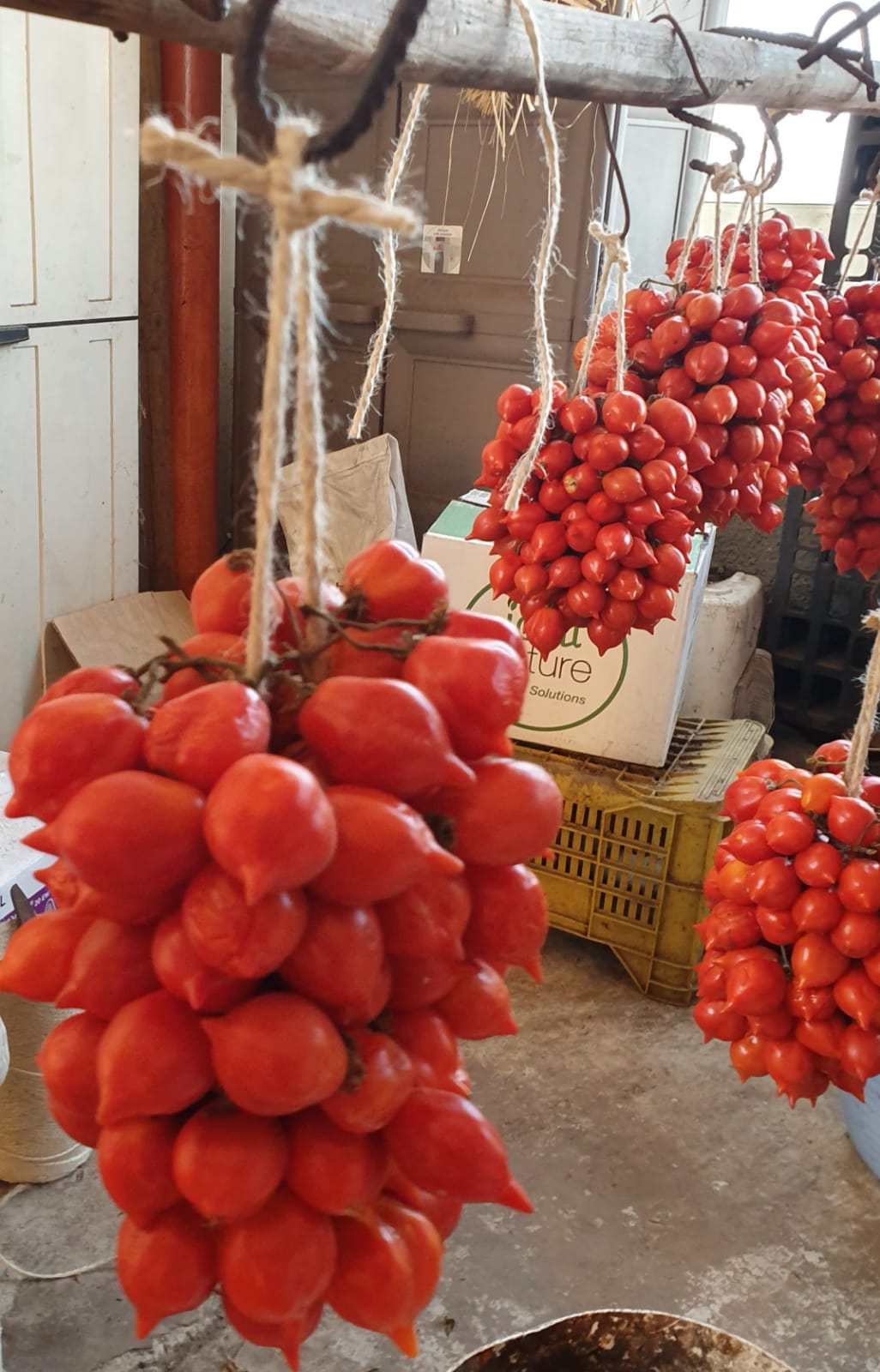Strengthening of the Italian Research Infrastructure for Metrology and Open Access Data in support to the Agrifood
Tomato Trace 4.0, a pioneering project for the traceability and quality of PDO productions

Scientific research can contribute to improving the traceability and quality of agri-food products, as exemplified by the TOMATO TRACE 4.0 Project. This project, funded by the PSR Campania 2014-2020, was recently discussed in Naples during the final conference organized by the Department of Agriculture of the University Federico II, a partner of the METROFOOD-IT Consortium. Over the years, the project's main objective has been to enhance the value of the Pomodorino del Piennolo del Vesuvio PDO by strengthening its connection to the production area.
The production area of Pomodorino del Piennolo covers the slopes of the Somma-Vesuvio volcanic complex, encompassing the territories of 18 municipalities located on the slopes of the Neapolitan volcano. The distinctive characteristic of this tomato is its savory-acidic taste, making it very pleasing to the palate. The product's qualities result from a combination of typical territorial factors, such as volcanic soil, local climate, and specific agronomic practices (plant density, irrigation water quantity, and fertilizers), collectively determining the characteristics of the Pomodorino.
According to Paola Adamo, the project's Technical-Scientific Manager and Full Professor of Agricultural Chemistry at the Department of Agriculture of the University of Naples Federico II, "The project arose from the need expressed by the producers of the PDO Pomodorino in the area who felt deceived by tomatoes cultivated outside the officially recognized PDO territory. Clearly, tomatoes grown outside this area cannot bear the origin label but are often sold at the same price and under the same name, causing obvious harm to both the producer and the final consumer."
Not just traceability
The primary need was, in essence, for greater certainty about the origin of Pomodorino del Piennolo. To achieve this, the project employed both simple and sophisticated tools to trace its origin, including geochemical fingerprinting (i.e., the chemical element composition of the tomato). "We cultivated the same local tomato varieties in the PDO area and in areas outside the PDO, then compared the geochemical fingerprints of the produced tomatoes. The resulting discriminant models built from the obtained data allowed us to distinguish with 100% accuracy between tomatoes of PDO and non-PDO origin. This was a significant achievement, but we didn't limit ourselves to this aspect: we also conducted spectroscopic and nuclear magnetic resonance analyses. In particular, the use of near-infrared spectroscopy proved extremely useful for assessing the quality of tomatoes. We also conducted, for the first time, sensory, taste, and olfactory analyses on fresh tomatoes, as well as those cooked, for example, on pizza." This research work primarily enabled the differentiation between tomatoes grown within the PDO area and those outside it. Furthermore, the results provide the Consortium for the Protection of Pomodorino del Piennolo del Vesuvio PDO with a way to improve the product's quality and protect it from origin fraud. "The data, in fact, show that the current production specifications (drafted about 15 years ago) perhaps grant too much freedom to individual agricultural producers. Many of our results can be useful to the Consortium to update it in terms of varieties, quality characteristics, and management practices," emphasizes Adamo.
The role of METROFOOD-IT
The METROFOOD-IT Consortium is also an integral part of this research activity. Thanks to the Consortium's funds, a doctoral project was financed, allowing the Department of Agriculture of Federico II to continue the analysis of Pomodorino del Piennolo into 2023, a year characterized by climatic conditions very different from the average of previous years. "This increased temporal variability will further strengthen our discriminant models. Additionally, the new METROFOOD equipment arriving in our laboratory in the coming months will enable us to apply additional analytical techniques for authentication and traceability purposes. The idea is that we will soon try to replicate this approach for other PDO products in the Campania Region (currently 15)," says Adamo.





